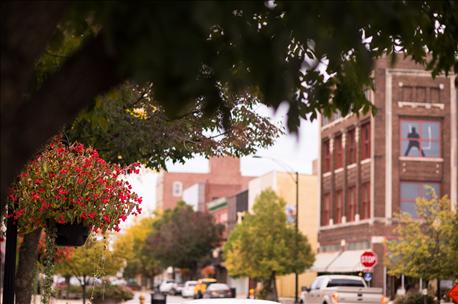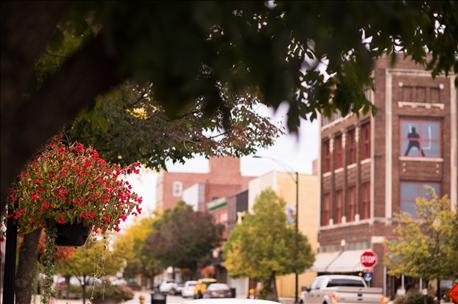
There are a lot of things to love about a small town. Friday night football games and county fairs. High school dinner theaters and family diners. Hardware stores and groceries.
Take the firetruck-led parade back into town, like the one in my hometown last week on the night the junior high baseball boys won big. Or the one here in our town, when the seventh-grade girls won a basketball trophy last winter. It’s good stuff.
It’s sitting around a gym and watching everyone cheer for everyone else’s kids. Or standing around a show ring and seeing handshakes and claps on the backs of kids from every adult nearby.

HOPE: What do you know about the young people in your town?
This good stuff is the stuff of a small town, and of the kind of community you want to be a part of. It’s people cheering for their people.
There’s another side, too, of course, and we delved into that in our cover story this month. I talked about it with USDA Secretary Tom Vilsack this month, too. Without a doubt, drugs continue to be a problem in our rural communities.
I see that problem, too, as I look around the community. They’re at the football games and the county fairs, too. They’re the kids who don’t see a future, who feel hopeless but see an escape in drugs. Who know painkillers are easy to get and so is pot, and those things promise to numb the pain for a while. To help forget the hopelessness.
In town
I have a confession to make: I didn’t see that side of small-town living until my children went to school. We farm, we live in the country, I work from home, we go to church in the country. We didn’t know a lot of people in town. Now we do.
What I’ve observed is alarming. When I was a kid, maybe 20% of kids were from homes where you questioned how well the kids were cared for. That means 80% were from loving homes with two parents, and at least one was employed. Today, I’d estimate that number is reversed.
Today, it’s not uncommon for children to share their home with their mom’s boyfriend and his kids, and maybe some of them are in the same grade. Today, instead of asking children to draw a picture of their family, teachers have to ask them to draw a picture of who lives in their home. As many as 75% of the children in some rural school districts are considered low income, which means they’re eligible for free or reduced-price lunches, are living with substitute care, or their family receives public aid.
This catches up as the children grow up. You see young people turning to drugs to escape. Fifteen years ago, we watch methamphetamines ravage rural communities; today, it’s prescription painkillers. The Centers for Disease Control and Prevention now estimates that the rate of death from drug overdose is similar to that of HIV/AIDS at the height of that epidemic. HIV was primarily an urban problem. Drug overdoses are cutting across rural and urban lines.
Your part
When I read stuff like this, the question in my mind is always this: What can farmers do about it? What can we do to help and to affect change in the towns we love?
It’s a big question without easy answers. Chris Merrett at the Illinois Institute for Rural Affairs believes it starts with education, and with education funding reform. I’d tend to agree. A well-educated community sees and grasps better opportunities. A well-funded school doesn’t have to make the choice between hiring reading enrichment teachers or hiring a counselor; it can hire both and deal with problems that go hand in hand.
You can also support projects like the CEO Program. I’ve hardly heard of a better way to train young people in hometown opportunity. CEO’s Amy Tarr and I first visited about this program in the stalls at a cattle show this summer; she’s an incredible resource for anyone interested in the program.
But more than anything, be aware. Know what’s happening in your community. Know the people. Know the resources.
And know that these small towns are good places, with good people. They’re the ones you see at the football game, at the county fair, at the parade. In the mirror.
Ask yourself: What can I do to help?
About the Author(s)
You May Also Like




